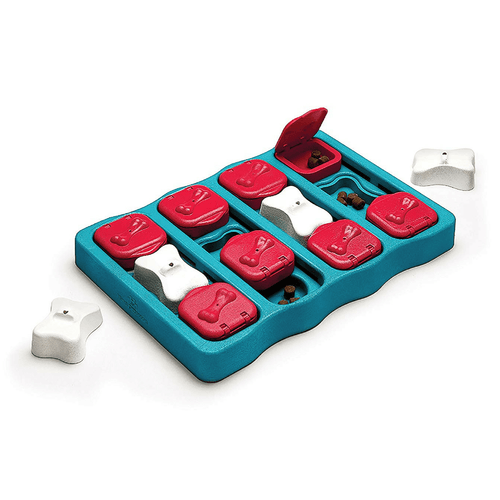Going for dog walks: how often should we go?
Walking is an essential part of your dog’s daily routine, not just for physical fitness but also for mental well-being. It allows them to explore the outside world, interact with other animals, and learn to understand different spaces other than just their home. For dog owners living in apartments, daily walks are crucial to ensure your pet gets enough exercise and stimulation.
But how often should you walk your dog? How often should you take it out to pee? What if you live in an apartment and there isn’t much space? What if it’s a small dog? A large one? How long should you walk your dog for? The answers to these question depends on several factors, including your dog's breed, health, local weather conditions, and age.
Breed
Dog breeds play a significant role in determining how much exercise they require. High-energy breeds like terriers, herding breeds, Kelpies, Labradors, and retrievers have a high level of energy and require regular and consistent exercise. These breeds are known for their high energy levels and require lots of activities such as running, fetching, and agility training. They might also experience advantages from extended walks, hikes, or even jogging alongside their owners.

On the other hand, less active breeds like Great Danes, Mastiffs, Bulldogs, and Greyhounds are known for their low energy levels and may not require as much exercise. These breeds may only require one or two short walks a day or a leisurely stroll around the neighbourhood. They may also enjoy a good snooze after a short walk.
It's also worth noting that there are breeds that fall in between these two categories, such as Beagles and Cocker Spaniels, which are not as high energy as a Kelpie but more energetic than a Bulldog and will require moderate walks and activities.
Health factors
The health of your dog is a critical factor to consider when determining how often they should be walked. If your dog is sick or injured, you may need to limit their exercise to short walks only or even temporarily halt walking them. If this is the case, it's best to consult with your vet for guidance on how much exercise your dog can handle during their recovery period.
It's important to note that some health conditions such as arthritis, obesity, and hip dysplasia can affect your dog's ability to walk and exercise. In these cases, your vet may recommend specific types of exercise, such as swimming or low-impact walks, to help maintain their fitness levels without putting too much strain on their joints.
Additionally, if your dog is recovering from surgery or a medical procedure, your vet may provide you with a specific walking schedule to follow to help them recover properly. They may also recommend using a harness or other equipment to help your dog walk comfortably and safely.
Conditions and temperature
The weather is also an important consideration when planning your dog's walks. During hot summer months, it's best to have shorter, less frequent walks to avoid any heat-related health issues. Rainy days can also be uncomfortable for both you and your dog, so it's best to avoid walks during heavy downpours.
Age
The age of your dog is also a crucial factor to take into account when determining how often they should be walked. Puppies, for example, have a lot of energy and require frequent and consistent exercise to help them burn off energy and to develop their physical and mental abilities. They tend to prefer quick and short walks, as well as playtime and interactive games to keep them mentally and physically stimulated.
As your dog grows older, their exercise needs will change. Adult dogs may require more moderate walks and activities, such as brisk walks, hikes, or agility training, to maintain their fitness levels. They may also prefer longer walks with shorter breaks in between.
Senior dogs, on the other hand, may have reduced energy levels and mobility, and may require shorter and less frequent walks. They may also benefit from leisurely strolls, rather than brisk walks, and may require more rest breaks during walks. They may also prefer to walk on softer surfaces, such as grass or dirt, rather than concrete or pavement, to help protect their joints.
As your dog ages, their exercise needs may change, and it's essential to adjust their exercise routine accordingly. It's always a good idea to consult with your vet to ensure that your senior dog is getting the right amount and type of exercise. Additionally, as with any dog, it's essential to observe their behaviour and energy levels during walks, and adjust the walk as needed.
How often to walk your dog
Based on these factors, a typical walking routine for a dog might include:
- A 15-minute short walk in the morning before breakfast
- Potty break walks as required during the day
- A longer 20-30 minute walk before dinner
- Potty break before bedtime
It's important to note that these are general guidelines and your dog's specific needs may vary. Always consult with your vet for specific advice tailored to your dog's breed, health, age and lifestyle. Additionally, your dog will let you know if they are getting enough exercise by waiting by the door or not wanting to come home during a walk.

Walking your dog can be a highlight of any day, not just for your pet but also for yourself. It's a great way to get some fresh air and exercise while bonding with your furry friend. So, take the time to plan regular walks for your dog and watch them thrive in body and mind.
Modern Pets has you covered
Need a new rope lead, harness, crate or just a new leash for your dog? We’ve got all your dog walking needs covered at Modern Pets.
We’re proud to sell high-quality, stylish, affordable pet products for discerning Australian pet lovers. Delivery nationwide.
















